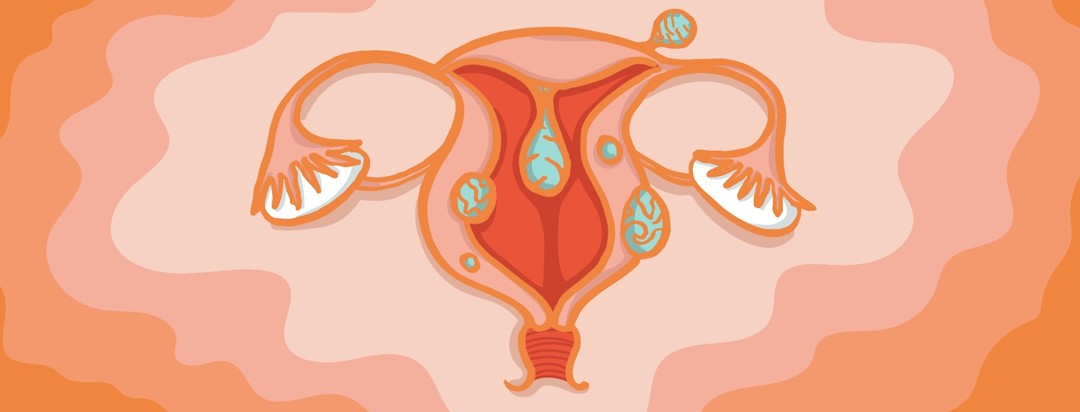Uterine Fibroids and Endometriosis
Endometriosis is a condition in which the uterine-like tissue grows outside of the uterus. This growth still bleeds and sheds monthly, as it will during a typical menstrual period, but it occurs in an area where it cannot easily leave the body. As a result, this can lead to symptoms such as increased menstrual pain, pain with sex, abnormal vaginal bleeding, intestinal distress, infertility, and chronic pain in the lower back and pelvis.1
Another condition that can resemble endometriosis symptomatically is uterine fibroids. Uterine fibroids are different from endometriosis in that they are noncancerous growths that occur inside or around the uterus.2 While symptoms can sometimes look like endometriosis, often, women who have uterine fibroids have no symptoms at all, which can make them difficult to detect.2
What are uterine fibroids?
The noncancerous growths of the uterus known as uterine fibroids most often occur in women during childbearing years. These growths are not connected to cancer and almost never develop into cancerous tumors. Uterine fibroids can range in size—from small, seed-like growths that would not visible to the human eye to large masses that can change the shape of the uterus.2
Symptoms of uterine fibroids
Uterine fibroids are often not even detected until a routine pelvic exam because they frequently do not have any symptoms. Depending on the size, location, and number of fibroids, symptoms can occur and can include:2
- Heavy or long menstrual periods
- Pelvic pain
- Frequent urination or difficulty emptying the bladder
- Constipation
- Back and/or leg pain
The connection between endometriosis and uterine fibroids
When symptoms of uterine fibroids occur, many of them are similar to those that occur with endometriosis. Symptoms such as abnormal menstrual bleeding; pelvic, back, and leg pain; and bladder and bowel problems can occur in both conditions.1,2 Because the symptoms can be so similar, endometriosis can be commonly mistaken for uterine fibroids.3 Recent studies also suggest that there may be a connection between endometriosis and uterine fibroids. Data indicates that endometriosis and uterine fibroids can occur together and can both negatively affect fertility.4
Causes of uterine fibroids
Though there may be a connection between endometriosis and uterine fibroids, this does not mean that one causes the other. In fact, the cause of uterine fibroids is unknown. Some of the following factors may be at play:2
- Genetic changes: Fibroids can contain changes in genes that are different from those found in normal uterine cells
- Hormones—estrogen and progesterone, two hormones involved in the menstrual cycle, may be related to the development of fibroids
- Other growth factors—growth factors such as insulin-like growth factor, which helps the body maintain tissue, could also affect fibroid growth
Treatment for uterine fibroids
Although uterine fibroids are rarely dangerous, treatments are available.2,5 Often, watchful waiting is prescribed. This means if fibroids are not causing any symptoms, your doctor may want to wait and see of symptoms develop. There are also medications available that target issues with the menstrual cycle, such as heavy bleeding or pelvic pain. These medications do not eliminate fibroids, but can shrink them, which may lessen symptoms. Medications include:5
- Gonadotropin-releasing hormone (Gn-RH) agonists, which treat fibroids by blocking the production of estrogen and progesterone in the body
- Progestin-releasing intrauterine device (IUD): Also a common form of birth control, an IUD can relive heavy bleeding caused by fibroids
- Tranexamic acid can ease heavy bleeding
Nonsteroidal anti-inflammatory drugs (NSAIDs) may also be prescribed to relieve any pain associated with fibroids.5
There are also procedures that can remove uterine fibroids that range from non-invasive outpatient procedures to surgery. MRI-guided focused ultrasound surgery is a noninvasive procedure that may destroy small areas of fibroid tissue. There are also minimally invasive procedures that can destroy uterine fibroids without surgery. And finally, for severe cases, surgery may be required.5

Join the conversation